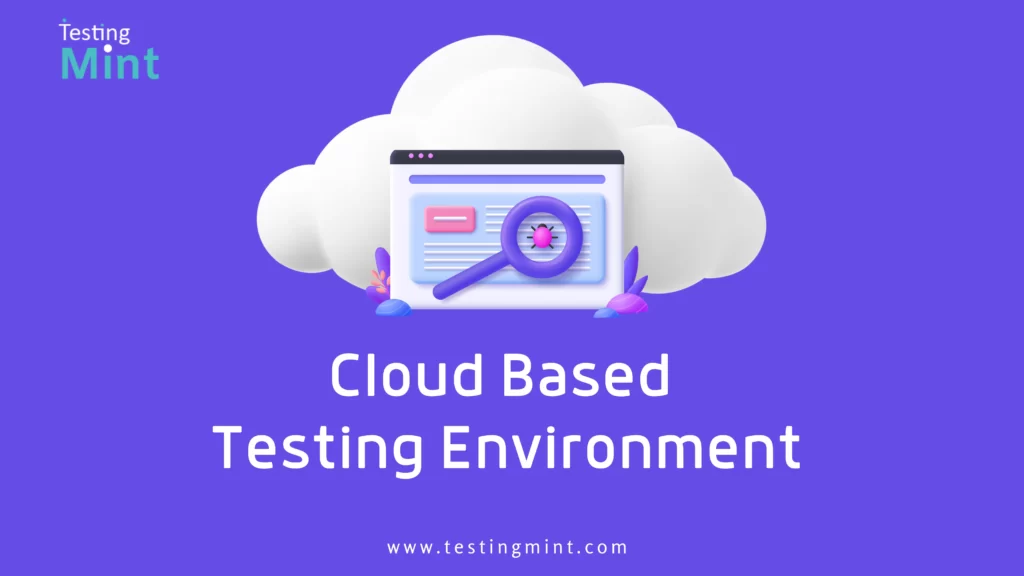Cloud based testing environments are a popular way to test software applications. They offer a number of advantages over traditional on-premises testing environments.
In this blog, we will discuss everything you need to know about cloud based testing environments, including what they are, how they work, and the benefits they offer.
What is a Cloud Based Testing Environment?
A cloud based testing environment is a software testing environment that is hosted on the cloud. This means that the testing environment is accessible to users over the internet, rather than being installed on a local computer or server.
Cloud based testing environments can be used to test a wide variety of software applications, including web applications, mobile applications, and desktop applications.
How Do Cloud Based Testing Environments Work?
Cloud based testing environments typically work by providing users with access to a pool of virtual machines. These virtual machines can be configured to have different operating systems, software applications, and hardware configurations.
Users can then use these virtual machines to test their software applications in a variety of different environments. This allows them to test their applications on a wider range of devices and configurations than they would be able to with an on-premises testing environment.
Benefits of Cloud Based Testing Environments
Cloud based testing environments offer a number of benefits over traditional on-premises testing environments, including:
- Scalability:
Cloud based testing environments can be scaled up or down to meet the needs of the user. This makes them ideal for testing teams of all sizes, and for projects of all sizes.
- Flexibility:
Cloud based testing environments can be used to test a wide variety of software applications, on a wide variety of devices and configurations. This makes them a very versatile testing solution.
- Cost savings:
Cloud based testing environments can save users money on hardware and software costs. Users do not need to purchase and maintain their own testing environment, as they can simply rent resources from a cloud provider.
Cloud Based Testing Environments Used For?
Cloud based testing environments can be used for a wide range of software testing activities, including:
- Functional testing:
Functional testing is used to verify that an application meets its functional requirements. Cloud based testing environments can be used to perform functional testing on a variety of devices and operating systems.
- Non-functional testing:
Non-functional testing is used to verify that an application meets its non-functional requirements, such as performance, scalability, and security. Cloud-based testing environments can be used to perform non-functional testing on a large scale, which can help to identify and address potential problems early on.
- Integration testing:
Integration testing is used to verify that an application integrates correctly with other systems. Cloud based testing environments can be used to create and manage complex integration test environments.
- Regression testing:
Regression testing is used to verify that changes to an application do not introduce new bugs. Cloud based testing environments can be used to automate regression testing, which can save time and money.
Types of Cloud Based Testing Environments
There are three main types of cloud based testing environments:
- Public cloud:
Public cloud environments are the most common type of cloud based testing environment. They are offered by a variety of providers, such as Amazon Web Services (AWS), Microsoft Azure, and Google Cloud Platform. Public cloud environments are typically “pay as you go”, which makes them a good option for businesses of all sizes.
- Private cloud:
Private cloud environments are hosted on-premises, but they are managed by a third-party provider. This gives businesses more control over their data and security. However, private cloud environments can be more expensive than public cloud environments.
- Hybrid cloud:
Hybrid cloud environments combine the features of public and private cloud environments. This gives businesses the flexibility to choose the right environment for their specific needs.
Examples of Cloud Based Testing Environments
Following are some of the examples of cloud based testing environments:
- BrowserStack:
BrowserStack is a cloud based testing platform that allows you to test your websites and apps on over 3000 real devices and browsers.
- LambdaTest:
LambdaTest is another cloud based testing platform that offers a wide range of testing features, including cross browser testing, mobile testing, and performance testing.
- Sauce Labs:
Sauce Labs is another popular cloud based testing platform that offers a wide range of testing features, including cross browser testing, mobile testing, and automated testing.
- AWS Device Farm:
AWS Device Farm is a cloud based testing service that allows you to test your apps on real devices and browsers.
- Google Firebase Test Lab:
Google Firebase Test Lab is a cloud based testing service that allows you to test your apps on real devices and browsers.
How to Get Started with Cloud Based Testing Environments
If you are interested in getting started with cloud based testing environments, there are a few things you need to do:
- Choose a cloud provider:
There are a number of different cloud providers that offer cloud based testing environments. Choose a provider that offers the features and functionality that you need.
- Set up your testing environment:
Once you have chosen a cloud provider, you will need to set up your testing environment. This includes creating virtual machines, configuring the operating systems and software applications, and creating test data.
- Start testing: Once your testing environment is set up, you can start testing your software applications. You can use a variety of different testing tools to test your applications in the cloud.
Conclusion
Cloud based testing environments offer a number of advantages over traditional on-premises testing environments. They are scalable, flexible, and cost-effective. If you are looking for a way to improve your software testing process, then cloud based testing environments are a great option to consider.

